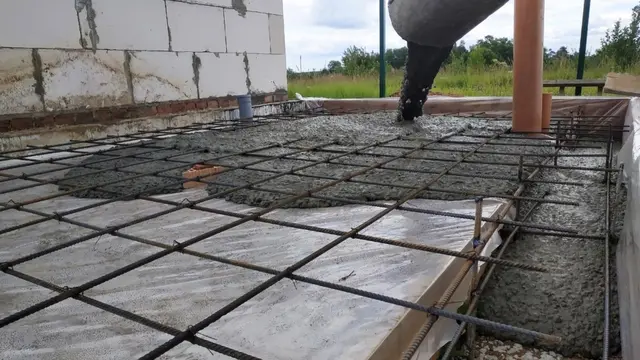In a groundbreaking advancement for sustainable construction, researchers at the University of Virginia have developed an innovative 3D-printed concrete material.
This novel composite, composed of limestone, calcined clay cement (LC2), and graphene, offers exciting potential to drastically reduce carbon emissions associated with construction.

The integration of graphene into this cement mixture significantly bolsters strength and durability while also benefiting the environment.
Graphene’s exceptional mechanical properties enhance the concrete’s resistance to cracking and require less water for mixing, thus conserving energy and resources.
As a result, this advancement represents a critical step toward greener building practices.
According to Osman Ozbulut, a professor at UVA’s Department of Civil and Environmental Engineering, the primary objective was to create a printable concrete that surpasses traditional options in performance and environmental friendliness.
“By incorporating graphene,” Ozbulut explains, “we found a remarkable way to lower carbon emissions without compromising the strength and flexibility vital for 3D printed structures.”
The research team conducted a comprehensive life cycle assessment of the graphene-enhanced LC2 concrete, revealing its potential to lower greenhouse gas emissions by approximately 31% in comparison to other 3D-printable mixtures.
Zhangfan Jiang, a postdoctoral researcher at UVA, highlighted the significance of understanding this new material’s environmental footprint, emphasizing its combination of superior mechanical performance and reduced impact.
In collaboration with the Virginia Transportation Research Council (VTRC), efforts were made to test the material’s applicability to transportation infrastructure, underscoring its real-world potential.
Tuğba Baytak, a visiting scholar, together with doctoral researcher Tawfeeq Gdeh, led a study that examined the material’s flow properties and mechanical performance with promising results.
With cement production contributing to 8% of global CO2 emissions, the push for sustainable alternatives is critical.
This development not only advances the capabilities of 3D-printed construction but also aligns with global efforts to mitigate environmental impact.
Ozbulut and his team previously explored the use of cellulose nanofibrils, showing a consistent commitment to enhancing concrete properties while reducing its ecological footprint.
This pivotal research was documented in the Journal of Building Engineering and funded by UVA’s 3 Cavaliers Program along with support from the Scientific and Technological Research Council of Turkey.
The success of this graphene-infused concrete exemplifies how innovative research can drive the construction industry towards a more sustainable future.
As other industries and research institutions take note of developments like these, the construction sector is poised to embrace more environmentally conscious practices, with promises of reduced waste and energy consumption.
